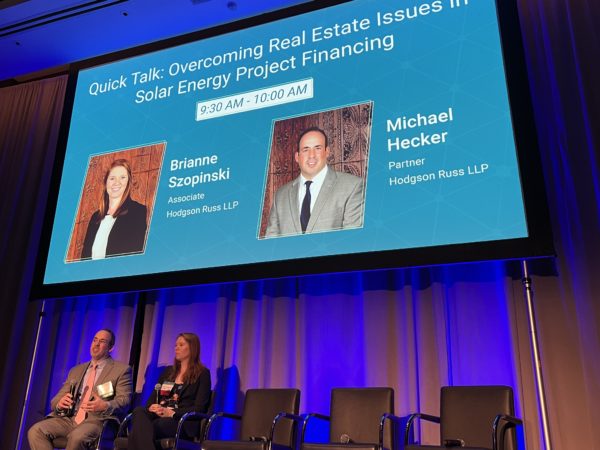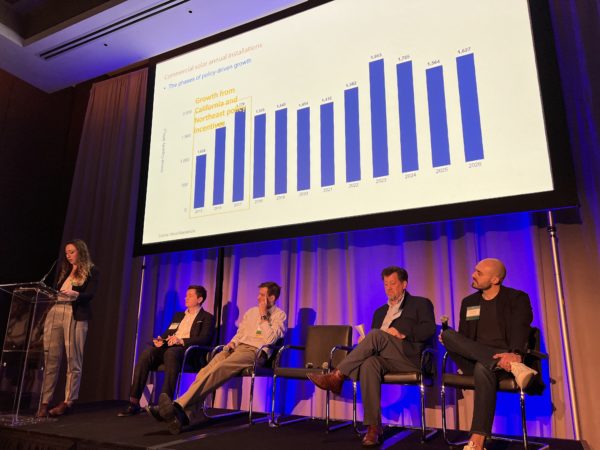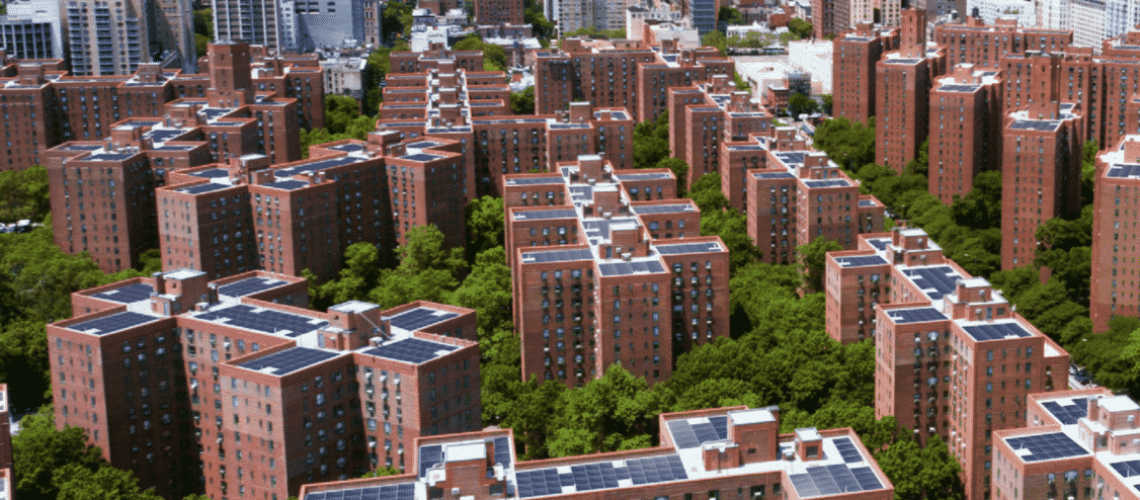The second day at SEIA dove into the risks and rewards of solar leasing, as well as a slew of tax considerations including tax transfer challenges, assignment rights & interests.
Day one of the Solar Energy Industries Association’s (SEIA) Tax, Finance, & Buyer’s seminar started with the BBB and ESG in NYC, while day two delved deeply into taxes and leases with multiple presentation tracks.
The first batch of presenters were commercial real estate managers and owners giving advice on how to interact with them, asset owners, and their tenants leasing space.
One of the more important points made was that many tenants are researching renewable and clean electricity on their own. Sometimes tenants had already procured their own supplies, and some tenants had required building managers and owners to meet certain – higher – standards (like absolute verifiability) so that they were able to meet their own corporate goals.
A second important datapoint came as a surprise: corporations committed to clean energy have shown a willingness to pay grid price (parity) – versus demanding pricing discounts. A few limited cases found corporations that were even willing to pay a premium price for clean energy, in order to meet their own corporate clean energy goals.
Another nuance to these corporate clients, according to Blackstone’s Eric Duchon, is that customers are seeking to “take back the meter” from the utilities. To take back the meter means to gain budget certainty on electricity pricing. Specifically, they are looking for explicitly defined electricity escalators within their power purchase agreements to defend against ongoing price increases, and events like the Texas super storm which “smacked” some customers with large bills.
Several speakers touched on the subject of solar developers’ and financiers’ risk perception as it relates to tenant occupancy rates. When tenants move away or go out of business, compensation for a leased solar structure falls to wholesale rates – or worse, as certain projects are required to entirely shut down electricity exports. Countering these fears is the reality that building managers and owners have a shared interest in filling their buildings with tenants. And as US unemployment rates continue to fall, it seems likely that investors’ positive long-term outlook will outweigh their concerns.

Next up were two lawyers. Brianze Szopinski and Michael Hecker from Hodgsun Russ LLP. To be very honest, these folks spoke quickly and intelligently on a host of topics that were above this author’s expertise – suggesting that if you are in need of legal help in New York State, these are the people to reach out to!
Some of the topics covered included assignment rights, cure periods, sales and tax transfer challenges, and considerations for assignment of membership interests.
Wood MackEnzie Renewable & Power team led a presentation speaking on the challenges of onsite commercial and industrial (C&I) solar power – and the near decade long stagnation of deployed capacity in this sector. The clearest way to show this was in graph form:

As 2017 wound down with California and New England C&I slowing, the rest of the nation stepped up – but only so much as to keep the vertical steady. The bump projected in 2023 by WoodMac is based on those seeking to deploy before the investment tax credit ends.
A beautiful 20 acre, 3.8 MWdc project was shared by Beam Living. The facility added nearly 10,000 modules across many rent controlled structures that sell their electricity into New York’s Community Solar program. The power plant took a year to install, and involved temporary apartment evacuations for some tenants as solar modules were lifted onto the roof via cranes.
Even though Beam’s owner – Blackstone – has a standard return on investment requirement of 10%, they considered the solar project’s 6% annual ROI to be sufficient, within the context of global solar payback rates. The power plant offsets 6% of the onsite electricity usage, and 2.4% of the housing project’s total emissions.
These last two days of pv magazine USA coverage (Day 1) did not fully touch on all of the events. The whole of the agenda can be found here. If there are any slide presentations that attendees wish to collect, please reach out to SEIA directly, for a copy.



